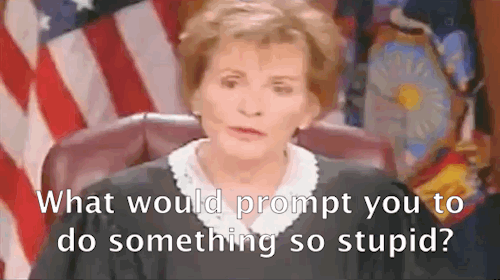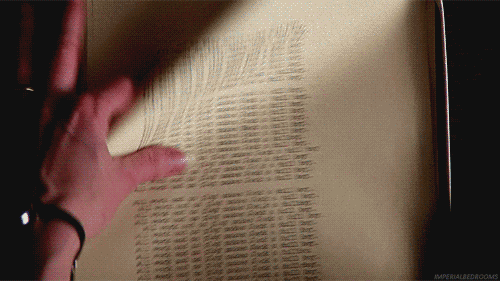So November marks my sixth month at Vox Media.
That's pretty cool.
I'm beyond fortunate that they hired me on to work part time from beautiful Muncie, Ind. while I finish up my degree.
But working remotely has definitely come with its own set of challenges. I realized recently that none of the time I spent in various workplaces prepared me to produce from home.
Here's a bit of what I'm talking about, and a few tips for if you ever work remotely ...
1) Step into my office
My first few weeks in Muncie, I spent a lot of time horizontal. I did everything from my bed. And it seemed awesome.
That is, until I started getting back pains and was restless when trying to sleep.
I don't think I need to cite any science journals for you to believe me when I say working from bed — though cool to a 22-year-old — is a bad idea.
To compensate for my more-sedentary-than-normal life change, I began doing yoga, and that helped immensely. I also started taking breaks throughout the day to do pushups or sit ups.
Oh, and I started working at my desk.
The desk thing mostly took care of my restlessness. I realized my bed was no longer a place to relax and that the stress from my day was carrying over into my nights. Moving that tension from my bed to another location pretty much did the trick.
So don't be me. Live a vertical life.
2) We are humans, not robots
OK, except for the actual robots.
It can be hard to grab people's attention, whether on a chat client or via email or whatever else. If you are not a physical, in-your-face entity, it can be a real challenge to get people to answer you.
I can't blame them. I don't always pay attention to the many little red dots notifying me of messages, either.
My buddy, Warren Schultheis, gave me a tip for this one: video chat. When possible, reach out to people with Google Hangouts or Skype so you and the person you're communicating with can hear voices and see faces and remember you're both humans.
If people can't commit to spontaneous video chats, setting up a regular meeting time is just as effective, I think. It still reminds people you're more than a red dot and a *ping.*
3) You are not alone ... you just feel alone
Piggybacking off my last point, I have to say, REMEMBER TO COLLABORATE. It can be really easy to work in a vacuum when remote. But doing so will just postpone confrontation of imminent problems and lead to frustration all the way around. Expecting yourself to collaborate throughout the process is absolutely crucial. Even if it means harassing people.
This is especially true if you're green and have a stupid amount of stuff to learn, as I do.
4) Judge Judy is not your co-worker
If you're like me, you appreciate having some background noise as you create.
When I started working from home, I used the TV as that background noise. That was fine, until I realized I was getting hooked on court TV shows and daytime dramas.
Do yourself a favor and stick to music or podcasts. According to science, music can actually help your productivity, anyway.
Don't let Judge Judy's burning glare distract you from your projects.

5) All work and no play makes Adam a dull boy
Schedule your work hours and stick to them. If you don't have a meeting until 3 p.m., it can be tempting to sleep in an extra half hour. Don't do it.
When working in an office, your arrival and departure from work serve as very blatant cues as to when you need to start and stop producing. You don't have those cues if you're working from the same place you live.
So create those cues. Keeping yourself on a schedule helps you stay balanced and keeps you accountable.
I've been struggling to keep myself out of a perpetual state of "just let me tweak one more thing." I've also had to remind myself that 10 p.m. on a Friday is a perfectly acceptable time to stop working and start hanging out with friends.
Beyond cultivating an internal clock, keeping a strict work schedule helps me work, play, and take care of myself.
Otherwise, I wouldn't eat. And all work and no food makes Adam a cranky boy.

6) Get out of your damn house
I realized when I started having conversations with my pet fish that I needed to get out. So I started working at my favorite coffee shop or relocating to Ball State's library when I started to go stir crazy.
Switching up camp grounds helps me fend off depression from a lack of socialization, boosts my productivity, and exposes me to better coffee than the crap I have at home.
All in all, a good thing.
So that's the gist of it.
After three months of working from home, I've pretty well adjusted to the challenges and have honestly become a better adjusted person than ever before.
Plus, the communication skills I've gained from these relatively weird technological constraints are totally going to help me in the long run.
The world is becoming smaller and offices more spread out as people phone into meetings from all over the world. Don't be caught off guard when you're expected to telecommute at some point in your life.
If you work from home or work with many remote employees, please feel free to post tips in the comments or tweet them at me.
I can make a list of quick advice to share with the world.